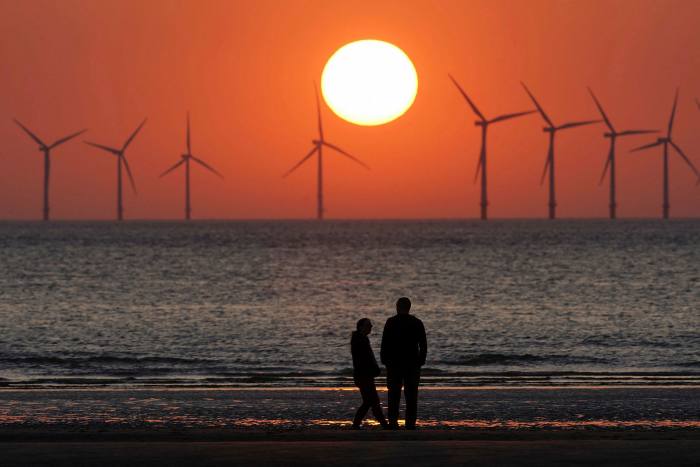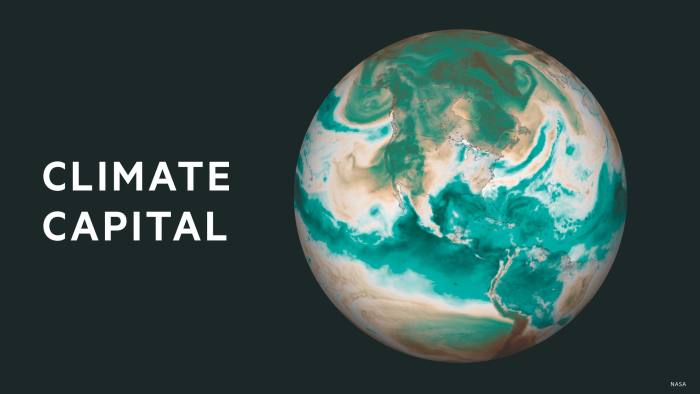BP has made one of its biggest renewable energy bets yet, acquiring the largest stake in a vast solar, wind and green hydrogen project in Western Australia that will cost more than $30bn to develop.
The energy major said on Wednesday that it had agreed to buy 40.5 per cent of the Asian Renewable Energy Hub, which it will also operate. The deal remains subject to approval in Australia.
Conceived in 2014 and developed by partners Intercontinental Energy, CWP Global and Macquarie, the 6,500 square kilometres site in the Pilbara mining region has the potential to be one of the largest renewable power hubs in the world.
It hopes to develop 26GW of solar and wind power, equivalent to a third of Australia’s entire generating capacity, and produce roughly 1.6mn tonnes a year of green hydrogen.
Anja-Isabel Dotzenrath, BP’s executive vice-president of gas and low-carbon energy, said the investment could significantly increase BP’s renewable power capacity and make “a material contribution” to its stated aim of securing a 10 per cent share of global hydrogen markets.
BP has pledged to build or acquire 50GW of renewable power by 2030 as it seeks to cut emissions to net zero by 2050 and transform from one of the world’s oldest oil producers into an integrated energy company. It had 1.9GW of installed renewables capacity by the end of 2021.
“We believe AREH can be a cornerstone project for us in helping our local and global customers and partners in meeting their net zero and energy commitments,” Dotzenrath said in a statement. “It will also serve as a long-term clean energy security contributor in Asia Pacific, helping countries such as South Korea and Japan to decarbonise.” BP did not disclose how much it paid for the stake.
The project faces obstacles. Despite the attraction of using solar power from Australia’s vast hot interior to turn water into zero-carbon hydrogen for export, the costly technology required to produce green hydrogen is still being refined and support from the Australian government has been limited.
The consortium’s application for environmental approval was also rejected last year by the Australian federal government, which described the proposal as “clearly unacceptable” because it threatened local wildlife and wetlands.
Dean Bialek, head of policy and international strategy at green hydrogen developer CWP Global, said he was confident the proposal could be reworked so that it was compliant with environmental standards. The issue had been put “on pause” while the deal with BP was negotiated.
The world at present produces about 90mn tonnes of hydrogen a year, mostly from natural gas and primarily for use in refining and industrial processes. About 10 per cent of that is considered “low-carbon hydrogen”, including hydrogen produced from natural gas but using carbon capture technology to catch the emissions. As little as 0.1 per cent of current output is “green hydrogen”, which is produced from water using electrolysis powered by renewable energy.
The International Energy Agency’s net zero 2050 pathway requires the production of low-carbon hydrogen to grow to 150mn tonnes a year by 2030 and to 520mn tonnes a year by 2050, when it says 60 per cent will be green hydrogen.
In addition to exporting green hydrogen to East Asia, the site in Western Australia hopes to supply renewable power to mining projects in the region, which include vast iron ore mines run by Rio Tinto and BHP Billiton.
Alex Hewitt, CWP Global’s chief executive, said BP’s record in delivering large infrastructure projects would help the consortium secure the more than $30bn in financing needed to fully develop the site.
“Since the inception of the Asian Renewable Energy Hub project, we have always referred to it as ‘renewable energy at oil and gas scale’,” he said.
The colours of the hydrogen rainbow

Green hydrogen Made by using clean electricity from renewable energy technologies to electrolyse water (H2O), separating the hydrogen atom within it from its molecular twin oxygen. Currently very expensive.
Blue hydrogen Produced using natural gas but with carbon emissions being captured and stored, or reused. Negligible amounts in production because of a lack of capture projects.
Pink/purple hydrogen Made using nuclear energy to power the electrolysis.
Grey hydrogen This is the most common form of hydrogen production. It comes from natural gas via steam methane reformation but without emissions capture.
Brown hydrogen The cheapest way to make hydrogen but also the most environmentally damaging because of the use of thermal coal in the production process.
Turquoise hydrogen Uses a process called methane pyrolysis to produce hydrogen and solid carbon. Not proven at scale. Concerns around methane leakage.
Climate Capital

Where climate change meets business, markets and politics. Explore the FT’s coverage here.
Are you curious about the FT’s environmental sustainability commitments? Find out more about our science-based targets here
Stay connected with us on social media platform for instant update click here to join our Twitter, & Facebook
We are now on Telegram. Click here to join our channel (@TechiUpdate) and stay updated with the latest Technology headlines.
For all the latest Business News Click Here
For the latest news and updates, follow us on Google News.
